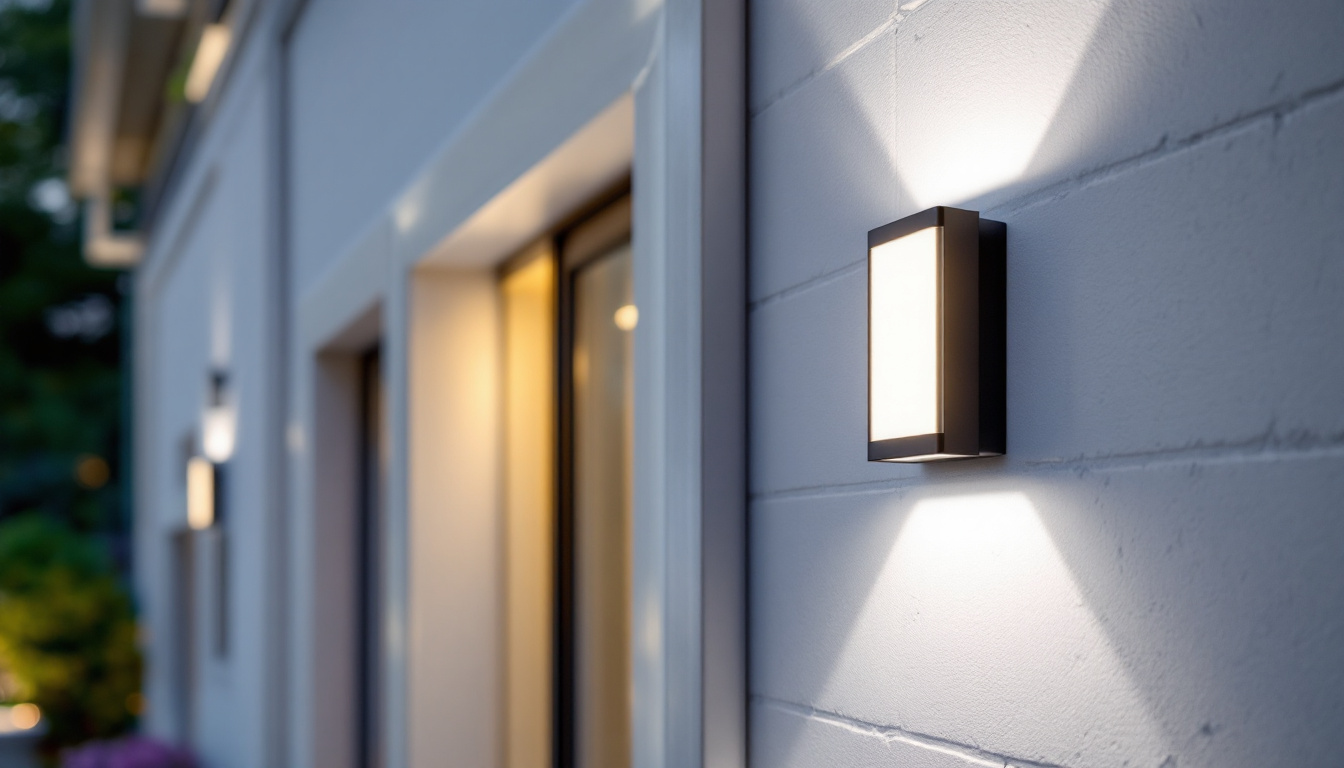
Motion sensor lighting has become an increasingly popular choice for both residential and commercial spaces. These systems provide convenience, energy efficiency, and enhanced security. By automatically turning on lights when motion is detected, they help to save energy and reduce costs. However, the implementation of motion sensor lighting can be fraught with challenges if not approached correctly.
For lighting contractors, understanding the nuances of motion sensor technology is essential. This knowledge not only aids in the selection of appropriate products but also ensures that installations meet client expectations and regulatory standards. A well-executed motion sensor lighting project can significantly enhance a space, but missteps can lead to dissatisfaction and financial losses.
There are several types of motion sensors available on the market, each with its own set of advantages and disadvantages. The most common types include passive infrared (PIR), microwave, and dual technology sensors. Understanding these types will help contractors choose the right sensor for specific applications.
PIR sensors detect changes in infrared radiation, which is emitted by moving objects, typically warm bodies. They are ideal for indoor applications and areas with limited movement. Microwave sensors, on the other hand, emit microwave pulses and can detect motion through walls and obstacles, making them suitable for larger areas. Dual technology sensors combine both PIR and microwave technologies to minimize false alarms and enhance detection accuracy.
The benefits of motion sensor lighting extend beyond mere convenience. One of the most significant advantages is energy savings. By ensuring that lights are only on when needed, energy consumption can be significantly reduced, leading to lower utility bills. This is especially beneficial in commercial settings where lighting can account for a large portion of operational costs.
Additionally, motion sensor lighting enhances security. By illuminating areas when movement is detected, these systems can deter potential intruders and provide peace of mind for property owners. Furthermore, they contribute to safety by ensuring that pathways and entrances are well-lit when approached, reducing the risk of accidents.
Moreover, the integration of motion sensor lighting with smart home technology is revolutionizing how we interact with our living spaces. Homeowners can now control their lighting systems remotely via smartphone apps, allowing for customizable settings and schedules. This not only enhances convenience but also allows for greater energy management. For instance, homeowners can program lights to turn on at specific times or when they are nearing home, creating an inviting atmosphere while ensuring that energy is not wasted during the day.
In commercial applications, the ability to monitor and adjust lighting through centralized systems can lead to significant operational efficiencies. Businesses can analyze usage patterns and adjust lighting schedules accordingly, ensuring that areas are only illuminated during peak hours. This adaptability not only contributes to cost savings but also aligns with sustainability goals, as businesses increasingly seek to reduce their carbon footprint. The combination of advanced technology and motion sensor capabilities is paving the way for smarter, more efficient lighting solutions that cater to the evolving needs of modern spaces.
While the benefits of motion sensor lighting are clear, there are common pitfalls that contractors must avoid to ensure successful installations. Understanding these mistakes can save time, money, and client satisfaction.
One of the most critical steps in any lighting project is conducting a thorough site assessment. Failing to evaluate the specific needs of the space can lead to inappropriate sensor selection and placement. Factors such as the layout of the area, potential obstructions, and the expected foot traffic should all be considered.
For instance, placing a sensor in a corner may limit its range of detection, while positioning it too high can reduce its effectiveness. Additionally, understanding the environmental conditions, such as temperature fluctuations and potential interference from other electronic devices, is crucial for optimal performance.
Another common mistake is overlooking the preferences and habits of the end-users. Different spaces have varying requirements for lighting, and understanding these needs is vital. For example, in a home setting, residents may prefer softer lighting in the evenings, while commercial spaces may require brighter illumination during working hours.
Consulting with clients about their preferences and how they intend to use the space can lead to better outcomes. This dialogue can also help identify potential issues before installation, such as the need for adjustable sensitivity settings or timers.
sensor placement is critical for ensuring the effectiveness of motion sensor lighting. Many contractors make the mistake of assuming that a single sensor can cover a large area. In reality, multiple sensors may be necessary to achieve comprehensive coverage. Additionally, sensors should be positioned to avoid obstructions that could block their line of sight.
Moreover, contractors should consider the height at which sensors are mounted. Sensors placed too high may not detect motion effectively, while those mounted too low may trigger unnecessarily due to small animals or other movements. A strategic approach to placement can significantly enhance the performance of the system.
The selection of the right equipment is essential for the success of any lighting project, particularly when it comes to motion sensor lighting. With numerous options available, contractors must be diligent in their choices to avoid costly mistakes.
When selecting motion sensors, it is vital to evaluate their specifications carefully. Factors such as detection range, sensitivity, and time delay settings can significantly impact performance. A sensor with a limited detection range may not be suitable for larger spaces, while one with adjustable sensitivity can help minimize false alarms.
Additionally, understanding the power source of the sensors is crucial. Battery-operated sensors may require regular maintenance and replacement, while hardwired options may offer more reliability but could involve more complex installation processes.
Environmental factors can greatly influence the performance of motion sensor lighting. For instance, outdoor sensors must be weatherproof and capable of withstanding temperature fluctuations. In contrast, indoor sensors should be designed to minimize interference from other electronic devices.
Contractors should also consider the impact of surrounding light levels. Some sensors may be less effective in brightly lit areas, while others may require specific conditions to function optimally. By selecting equipment that is well-suited to the environment, contractors can enhance the reliability and effectiveness of the lighting system.
Proper installation is crucial for ensuring that motion sensor lighting systems function as intended. Following best practices during installation can help avoid common pitfalls and enhance the overall effectiveness of the system.
Every motion sensor comes with specific manufacturer guidelines that outline installation procedures, wiring requirements, and operational settings. Adhering to these guidelines is essential for ensuring optimal performance and longevity of the system. Skipping steps or improvising can lead to malfunctions and increased maintenance costs.
Moreover, understanding the warranty and support options provided by manufacturers can be beneficial. In case of issues, knowing how to access support can save time and resources in troubleshooting and repairs.
Once the installation is complete, thorough testing of the system is essential. This step ensures that all sensors are functioning correctly and that the lighting responds appropriately to motion. Testing should include checking the detection range, sensitivity settings, and ensuring that lights turn off after the designated time delay.
Additionally, contractors should encourage clients to test the system during different times of the day and under various conditions to ensure that it meets their needs. This proactive approach can help identify any adjustments that may be necessary before the project is considered complete.
After installation, educating clients on how to use and maintain their motion sensor lighting systems is crucial. Many clients may not be familiar with the technology, and providing clear instructions can enhance their experience and satisfaction.
Providing clients with user manuals and documentation can empower them to understand their new system better. These resources should include information on how to adjust settings, troubleshoot common issues, and perform routine maintenance. Clear documentation can also serve as a reference point for clients in the future.
Additionally, offering a brief tutorial during the final walkthrough can reinforce understanding and confidence in using the system. Addressing any questions or concerns at this stage can prevent misunderstandings and ensure a smoother transition to the new lighting setup.
Regular maintenance is key to ensuring the longevity and effectiveness of motion sensor lighting systems. Contractors should encourage clients to perform routine checks on their systems, including cleaning sensors, checking for obstructions, and replacing batteries if applicable.
Establishing a maintenance schedule can help clients stay proactive in caring for their systems. Providing reminders or offering maintenance services can further enhance the client relationship and ensure that the lighting system continues to perform optimally over time.
Motion sensor lighting presents a wealth of opportunities for lighting contractors, offering energy efficiency, enhanced security, and convenience for clients. However, avoiding common mistakes is essential for ensuring successful installations and satisfied customers. By understanding the technology, conducting thorough assessments, selecting the right equipment, and following best practices during installation, contractors can avoid costly pitfalls.
Educating clients on system usage and encouraging regular maintenance can further enhance the overall experience, leading to long-term satisfaction. By approaching motion sensor lighting projects with diligence and care, contractors can create effective and reliable lighting solutions that meet the diverse needs of their clients.
Ready to elevate your lighting projects with the best motion sensor technology? Look no further than LumenWholesale for all your lighting needs. Our extensive selection of spec-grade lighting products ensures you have access to the highest quality options at wholesale prices that can’t be beaten. Say goodbye to inflated markups and hello to hassle-free bulk buying with free shipping. Don’t compromise on quality, affordability, or convenience. Take the next step in creating efficient, secure, and convenient lighting solutions for your clients. Visit LumenWholesale today and discover the value of wholesale lighting done right.

Explore the transformative impact of LED solar lights on outdoor energy efficiency.

Discover how T and R Lighting can future-proof your lighting projects with innovative solutions.

Discover how the 3 1/2 junction box cover can significantly impact lighting contractors’ profitability.

Discover essential tips and best practices for lighting contractors working with Sunco Lighting Outdoor LED Wall Packs.